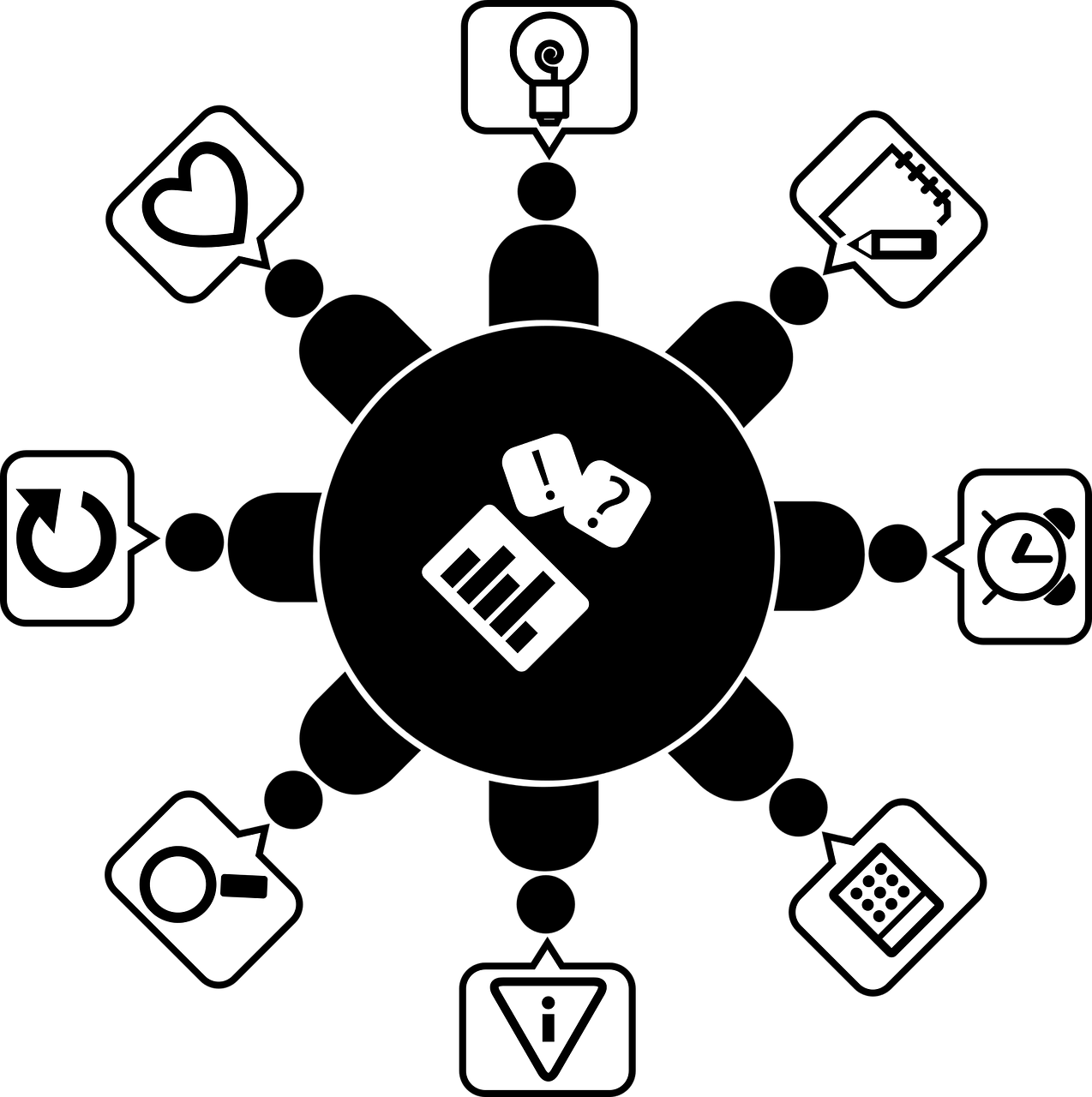“If you find yourself weak in persistence, surround yourself with a mastermind group.” Napoleon Hill
Focus on Business Radio: Mastermind Groups for Exponential Growth

Why You Need a Facilitated Mastermind Group
Business owners, solopreneurs, and entrepreneurs have a lot of demands on their time, and this leads to stress. Stress impacts rational decision-making and effectiveness. Another challenge to business leaders is the feeling that everything is on their shoulders. They would like to have peers to discuss options, issues, and opportunities. But who has time to find those resources? How would you do it if you could make the time? How would it work? What are you trying to accomplish? I think you are looking for a mastermind group.
What Is a Mastermind Group?
Mastermind groups are peer groups comprised of non-competing business leaders. They provide:
- Peer mentoring/advising
- Brainstorming
- Problem-solving
- Accountability and encouragement resource
- Subject matter expertise and experience
- Referral sources
- Teaming opportunities
Essentially mastermind groups magnify the skills, abilities, and experience of the members enabling better decision-making, idea generation, and problem analysis.

Group Composition
Size does seem to matter when it comes to mastermind groups. The most successful mastermind groups are around five or six members. There are larger groups, sometimes with as many as twenty members.
Smaller groups are more productive and focused because it is simpler to manage the process and measure the progress of members. With smaller groups, each member gets some time at each meeting to bring their challenges and opportunities up for discussion.
In contrast, larger groups can’t get to everyone at each meeting. Therefore, decisions have to be made by the group on who will present. I’ve participated in several large mastermind groups of more than twenty members and find that the commitment to attend every meeting isn’t there. Also, some group members may bring more issues to the group and take up more of the group’s time and resources.
So keeping the group size to around five or six enables the group to stay focused and allocate time and resources proportionately to each member. It also provides more visibility to hold the members accountable to attend meetings, participate, and to keep track of progress and deliverables. After all, one goal of a mastermind group is to keep its members taking consistent action.
Ideally, in the mastermind group, each member will have what I call a superpower. Currently, in my mastermind group, I am the strategist, visionary, and business process designer. We also have a rainmaker/relationship guru, an engineer/technology specialist, legal, and other experts.
Ultimately, your group’s composition is determined by the goals the group establishes. When launching new groups, I keep in mind the goals of each applicant company, the stage and type of business, size (revenues, profits, and the number of employees), and many other factors. As the mastermind group facilitator, I use several tools to profile the applicants and compose the team for maximum effectiveness.
“It is literally true that you can succeed best and quickest by helping others succeed.” Napoleon Hill
Group Dynamics and Personalities
It is essential to find the right people for each group. The smaller the group, the more the relationship dynamics need to work. There are several personality and leadership assessments I use to identify the profiles of each prospective group member.
Personalities, communication styles, and many other factors have to be considered before inviting them to join a mastermind group. To a large degree, this is matchmaking. Diversity in the group is essential. However, the members have to click together like the pieces of a jigsaw puzzle. The wrong piece in the right place just doesn’t fit.

Group Dynamics and Personalities
It is essential to find the right people for each group. The smaller the group, the more the relationship dynamics need to work. There are several personality and leadership assessments I use to identify the profiles of each prospective group member.
Personalities, communication styles, and many other factors have to be considered before inviting them to join a mastermind group. To a large degree, this is matchmaking. Diversity in the group is essential. However, the members have to click together like the pieces of a jigsaw puzzle. The wrong piece in the right place just doesn’t fit.
Adhoc or Designed Groups
Many successful ad hoc groups come together from invitations. If you ask the group, you will find the majority of them have had numerous people pass through that didn’t fit for many reasons. Those reasons may include an unwillingness to commit to attending the meetings or a lack of contribution to the success of the other members. The list of reasons why someone doesn’t fit in a group is as varied as the people you know.
I’m a proponent of designed groups. When you plan a mastermind group, you start with the goal or purpose in mind. If a group is being formed to increase revenues and profits versus a group that is focused on fundraising, you need different roles, expertise, and experience.
I wouldn’t put a start-up, twenty-something entrepreneur in a group with lifestyle mom and pop business owners in their 50’s. They aren’t at the same stage or needs. Could they learn from each other? Sure. However, the relationships and contributions would be unequal.
So whether you are strategic in creating your mastermind group or it forms ad hoc, you have to take into consideration the personalities, demographics, industries, stage, size, and type of business. You want a group of like-minded peers with diverse backgrounds that complement each other.
Organization, Rules, Commitments, and Accountability
Every organization, including mastermind groups, needs a mission statement. The mission statement ensures that everyone is on the same page and focuses on the desired outcome. In general, a mastermind mission statement includes elements that encourage, focus and drive the group’s success.
“A Goal is a dream with a deadline.” Napoleon Hill
Once the mission is finalized, then the group establishes the ground rules. For the facilitated mastermind groups I lead, I provide a core set of guidelines that include the established time, length, and frequency of meetings, as well as the codes of conduct and confidentiality.
Additional guidance on the:
- type (virtual, in-person, or both),
- locations for in-person meetings
- devices (are they allowed? On silent? Etc.),
- format (one or two members per session, all members present, etc.),
- roles (documentation, timekeeping, and other needs),
- etiquette (language, punctuality, interruptions, feedback, etc.),
- guests and additions,
- grounds for losing your seat,
- other elements based on group goals.
Establishing ground rules makes expectations clear. Every member of the group must sign a statement of commitment to the standards.
Investing in Success
My experience and research into mastermind groups show that the majority of successful groups are not free. Investing in your mastermind group may include paid facilitators, meeting space, and administrative support. Some groups also require fees for missed meetings. (Too many missed sessions, and you surrender your seat.)
Success is Built on Engagement
Your mastermind group works when members attend and contribute. Because mastermind groups are peer collaboration, everyone has to be engaged in the process. Successful mastermind groups create a foundation for exponential growth, personally and professionally.
“Some people dream of success, while others wake up and work hard at it.” Napoleon Hill
The Ultimate Mastermind Group
There is no one format for success. After all, mastermind groups are diverse. The crucial element is to create a format that enables your group to maximize results and engage consistently. You want to establish a schedule and means of meeting that works for your team. You want to be free of distractions and focused on the content of the meeting.
In today’s environment, your group may meet via Zoom, Skype, Google Hangout, or Facebook Live. The method of connecting isn’t as critical as actually connecting! For decades mastermind groups have primarily been local for ease of meeting. Recently, I’ve facilitated the formation of national mastermind groups that meet via Zoom. Technology facilitates deeper relationships across the miles.
Structure Required
Many groups resist structure, but it is critical to success. Communicating about meetings, agendas, commitments, follow-up, and other aspects of the group and relationships increase efficiency during the session. Establishing a consistent meeting format with time allocations and specific deliverables makes a difference in the results you achieve.
For instance, allocate time to each member presenting their need or discussion topic. Establish the amount of time provided for questions and answers and feedback if the group has a joint project, specify the time for status updates from each member.
Many years ago, a colleague told me that the key to successful relationships was the three F’s: frank, fair, and friendly. Over the years, I’ve changed this to fair and frank feedback. I’d say that translates to providing actionable insights and critiques that are focused on the actions and not the person. Feedback should be constructive.
Motivate Momentum
Communication between group members should continue outside of the formal meeting. Groups usually establish shared folders (Dropbox, Google Docs, or another tool). Groups include meeting minutes, deliverable trackers, information on upcoming meetings, and other information.
Dynamic mastermind groups are always learning. Growing the collective knowledge of your group could include sharing business and leadership book recommendations. (I have a colleague who is a massive fan of the EOS books. She even keeps copies to share.)
Mastermind Exponential Growth
Joining the right mastermind group can jump start and fuel business and personal growth. When I found the right mastermind group, my business more than tripled its revenue and profits. Whatever the opportunities or challenges your business is facing, the right mastermind group can get you on track to success.
Copyright ©2020 Lea A. Strickland/F.O.C.U.S. Resource, Inc.
